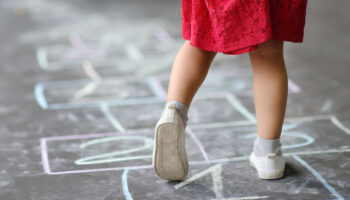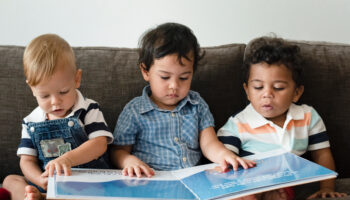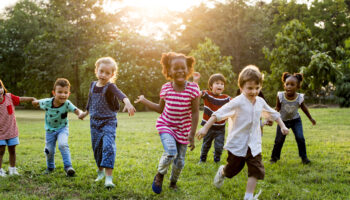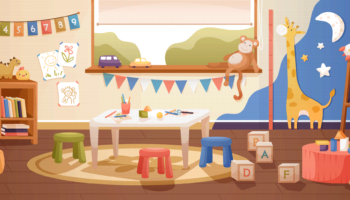Patty Carroll
Many child care facilities struggle with taking infants outside. They wonder why it is so important and included as part of the Infant Toddler Environment Rating Scale.
During the first few years of life, infants are trying to make sense of their world. One of the ways they do this is by soaking up every noise, sound, and experience. They take this information and come up with ideas about how the world works. So, not only is being outdoors an enjoyable experience for infants, it’s critical for cognitive and physical development as well as other areas of development.
During the first three years of life, the brain grows at a rapid rate. This growth is based on the richness of the child’s sensory environment, so it would make sense that child care providers would want to provide a stimulating environment for infants, both indoors and outdoors.
The ITERS-R does consider that infants spend some time each day outdoors, weather permitting. Pennsylvania has further defined “Weather Permitting” through a PA Position Statement. Thelma Harms, who is one of the authors of the Environment Rating Scales, often speaks of an old Swedish saying that says, “There is no bad weather, only bad clothes.”
It takes a lot of effort on the part of infant teachers and parents to take children outside. Work with your parents on providing appropriate clothing for all kinds of weather. Let parents know your policy for outdoor play so they know how to dress their infants. Also, set up a clothing donation box so that parents, teachers, or other adults in the program can drop off winter clothing that no longer fits their child. You can use that clothing for children who do not have extra warm winter clothes. Even if infants are only out for 5 or 10 minutes, it will still help to prevent illness and provide some of those sensory experiences that are so critical for their development.
The outdoors offers important health and developmental benefits and valuable experiences that are simply not available indoors. With thoughtful planning and supportive practices and policies, programs can provide infants with opportunities for active outdoor play, nature exploration, and connections with trusted adults in many ways, even in circumstances that are less than ideal. Working together, staff and families can offer rich learning opportunities that support children’s development and help them find success and joy outdoors.
Remember that the experiences infants have outdoors while they are in child care may be the only opportunity they have to really explore the outdoors. By taking infants outdoors, you are providing a wonderful opportunity to set up a good model for parents to follow. If children learn to love being outdoors when they are young, it will support healthier lifestyles and ensure that they will take better care of our world when they are adults.
Child care sites that have some kind of covered outdoor space such as a porch, a gazebo, or a small covered area on a playground seem to be better able to take children outside when the weather is a bit on the low side of weather permitting.
Here are a few suggestions to help:
For children 0-3 months:
Provide a blanket for the baby to lay on. Point out the leaves moving, let them feel the leaves or grass, and point out the nature sounds that they hear.
For children 3 months-6 months:
With the blanket, let the child explore on his/her stomach. Bring out objects to grasp, books, or activity gyms. Again, point out the things happening in nature and let them feel natural objects.
For children 6 months-9 months:
Create a texture path on the ground using assorted textures such as carpet squares, rugs, grass, and resilient surfacing. The children can crawl along this path to develop large motor skills and sensory stimulation. Provide tunnels, balls, and safe sensory tubes.
For children 9 months-12 months:
Provide balls, bubbles, and toys that are sturdy enough to help them practice standing. Provide simple push toys for early walkers. Attach musical toys, activity centers, and mirrors to the fence at different levels for children who are still crawling and for children who are standing.
Please see the following article if you are interested in additional information and resources:
The Importance of Taking Infants and Toddlers Outdoors




